Inter partes review (“IPR”) and covered business method review (“CBM”) became options for challenging issued patents under the America Invents Act on September 16, 2012. These proceedings are turning out to be even more popular than predicted. The decisions thus far appear to be demonstrating a pro-petitioner tendency. On April 15, 2014, the PTO held the first in a series of roundtables during which it supplied a multitude of statistics. The following is a roundup of statistics from the roundtable and other sources:
AIA Petitions Are Becoming Increasingly Popular1
AIA Petitions are very popular and becoming more popular every month. As of April 10, 2014, a total of 1,196 petitions had been filed. On average, over the year and a half since these petitions have been available, over 63 have been filed per month. And the rate of filing is increasing rapidly. In the first two weeks of April 2014, 76 petitions were filed.
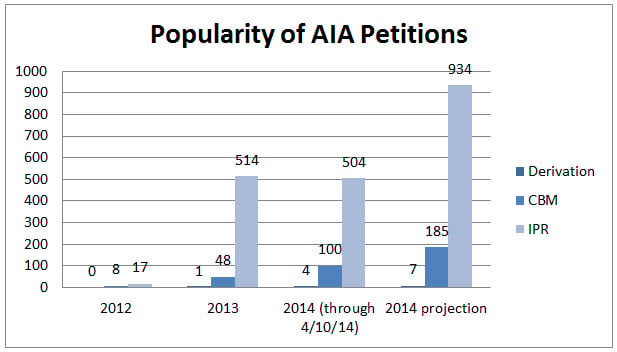
The vast majority of the petitions are for IPR, followed by CBM, followed by Derivation proceedings, which challenge ownership issues. No Post Grant Review (“PGR”) petitions have been filed to date. Of the 1,196 total petitions as of April 10, 2014, the breakdown is as follows:
- 1,035 IPR = 86.5%
- 156 CBM = 13%
- 5 Derivation Proceedings (“Derivation”) = .004%
- 0 PGR
Most Petitions Are for Electrical/Computer Patents2
The vast majority of petitions (71%) are for electrical or computer-related patents. However, biotechnology and pharmaceutical patents are proving to be more popular than expected, with 59 filed thus far (5%). Further, design patents should not be forgotten – 8 have been filed so far and more are sure to follow.
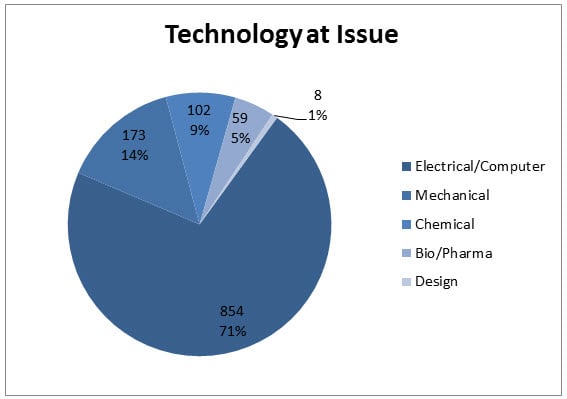
Most Petitions Are Instituted3
For CBM petitions, 52 of 62 have been instituted or 84%. Similarly, for IPR petitions, 416 of 506 have been instituted or 80%.
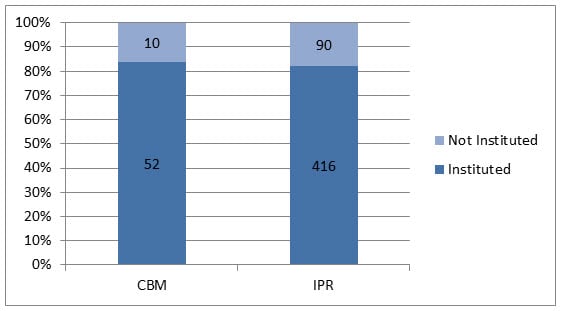
Large Numbers of Claims Are Deemed Unpatentable4
Of the 167 IPR petitions that have been resolved (as of April 2, 2014), final decisions have been reached as to 28 patents (29 final written IPR decisions based on 28 patents). For 9 out of the 28 patents (32%), all of the claims were deemed to be unpatentable. For the remainder, at least some of the claims were deemed to be unpatentable.
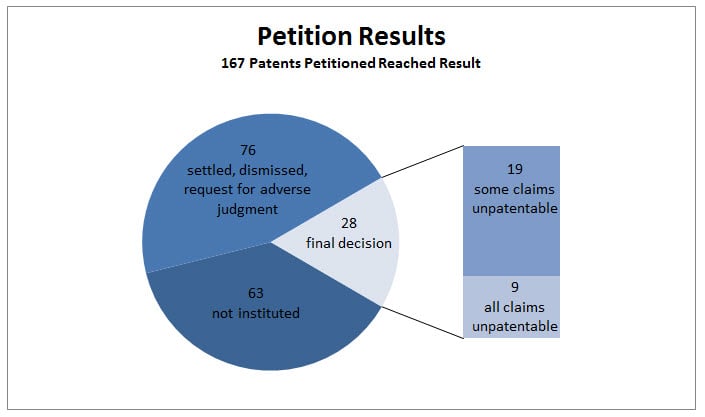
On April 11, 2014, in two separate cases, the PTAB issued its first decisions completely upholding the patents at issue. See ABB Inc. v. Roy-G-Biv Corp., P.T.A.B., No. IPR2013-00062, 4/11/14, and ABB Inc. v. Roy-G-Biv Corp., P.T.A.B., No. IPR2013-00074, 4/11/14.
The Basis for Unpatentability is Usually Obviousness under Section 1035
There are often multiple bases for unpatentability, but obviousness under Section 103 has been the most frequent basis for post-grant invalidity findings. In 64% of the CBM decisions, and 86% of the IPR decisions, the basis for unpatentability was obviousness under Section 103.
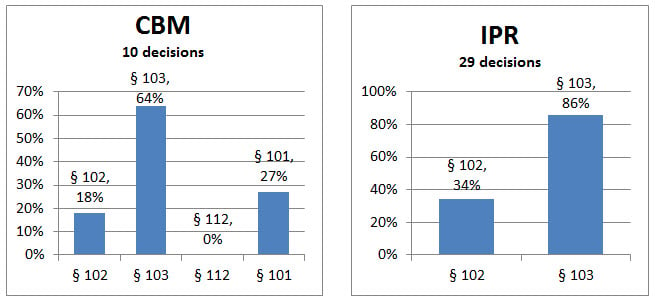
The Majority of Petitions Are in Pending Litigation
Of the petitions being filed, a vast majority are in pending litigation. A study from the fall of 2013 indicates that 83% of IPRs were in pending litigation.6 The PTAB confirmed this statistic during a recent roundtable, indicating that according to its data, 80-90% of petitions are in district court litigation. As to stays, the same study reviewed the rate at which motions to stay the pending litigation were granted and found a 72% grant rate for motions to stay pending post-grant proceedings.7
1 The actual data is from the PTO: http://www.uspto.gov/ip/boards/bpai/stats/aia_statistics_04_10_2014.pdf. The 2014 projection is based on an assumption that the rate from the beginning of 2014 continues through the fiscal year [Calculation: (data as of 4/10/14) / (197 days elapsed) * (365 days per year)].
2 http://www.uspto.gov/ip/boards/bpai/stats/aia_statistics_04_10_2014.pdf
3 http://www.uspto.gov/ip/boards/bpai/PTAB_roundtable_slides.pdf
4 http://www.uspto.gov/ip/boards/bpai/PTAB_roundtable_slides.pdf
5 http://www.uspto.gov/ip/boards/bpai/PTAB_roundtable_slides.pdf
6 El-Gamel, Samuel, Siddoway, The New Battlefield: One Year of Inter Partes Review Under the America Invents Act, 42-1 AIPLA QUARTERLY JOURNAL, 39, 55 (2014).
7 Id.